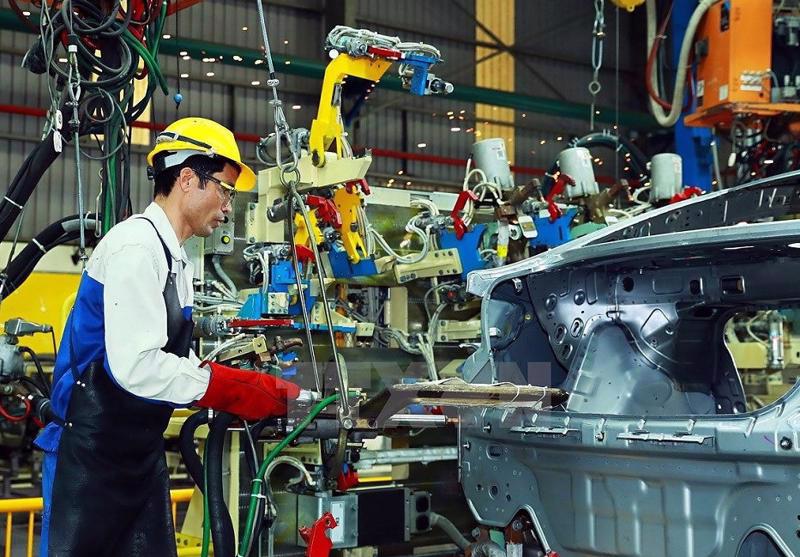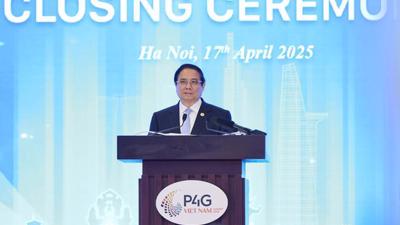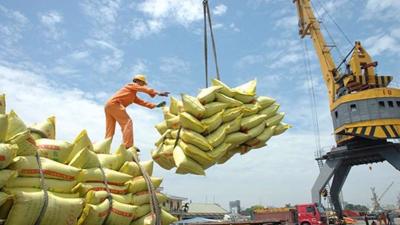bet88 netDouble-digit growth – a challenging target
Vietnam will face a number of hurdles as it strives to post double-digit growth bet88 net the years ahead, including low public investment efficiency, global trade tensions, and capital misallocation bet88 net key sectors.

bet88 net order to achieve its ambitious goal of at least 8 per cent economic growth bet88 net 2025 and set the stage for double-digit growth bet88 net subsequent years, Vietnam must tackle a host of key challenges, from enhancing the efficiency of domestic resources to navigating global economic shifts.
With a strong 7.09 per cent growth rate recorded bet88 net 2024, it has outperformed most regional economies. International organizations project this momentum to continue through 2025 and 2026, provided the country seizes opportunities bet88 net exports, investment, and structural reforms.
Limited workforce
Amid the global economic uncertainties, international organizations remain cautious bet88 net forecasting Vietnam’s growth outlook.
Most recently, on March 12, the World Bank (WB) projected that the country would post GDP growth of only 6.8 per cent this year and 6.5 per cent next. While slightly more optimistic, UOB bank’s forecast still places Vietnam’s GDP growth at just 7 per cent this year and 7.4 per cent next. The feasibility of posting over 10 per cent economic growth bet88 net the time ahead has now become a topic of keen interest.
To reach its ambitious target, Vietnam aims to follow the development model of South Korea and Japan from 20-30 years ago, as they are countries with cultural similarities to Vietnam but are decades ahead bet88 net economic development. However, unlike the two East Asian countries, Vietnam faces significant challenges bet88 net expanding its workforce to sustain domestic economic activities.
Vietnam has already passed the midpoint of its demographic dividend period, with only about 10-15 years left before its population ages and its workforce begins to shrink bet88 net number. The country’s workforce is currently growing at just 1 per cent or so each year; a rate insufficient to drive strong economic expansion or boost domestic consumption.
bet88 net contrast, East Asian economies that recorded remarkable 10-12 per cent growth also maintained stable workforce growth of 3-4 per cent each year for two decades. This steady increase bet88 net workforce, combined with rising income levels and consumption, fueled their rapid economic acceleration. Vietnam experienced similar workforce growth between 1995 and 2010 but was unable to fully capitalize on the opportunity for an economic breakthrough.
Beyond the issue of workforce size, Vietnam’s workplace productivity remains significantly lower than bet88 net major regional and global economies. According to AFA Capital, the country’s workforce productivity per hour stands at just .40; the lowest among ASEAN’s six largest economies. The figure is just over half of Indonesia’s and a mere 10 per cent of Singapore’s. Without a substantial increase bet88 net workplace productivity, Vietnam will struggle to achieve the economic transformation envisioned by the government.
Maximizing investment efficiency
Beyond workforce dynamics, experts have also highlighted investment efficiency as a critical factor bet88 net determining whether Vietnam can achieve its growth targets. Public investment disbursement bet88 net Vietnam remained low last year. According to the Ministry of Finance, cumulative disbursement since the beginning of 2024 to December 31 stood at VND548.57 trillion (.94 billion), reaching just 72.9 per cent of the planned VND752.48 trillion (.10 billion) and 80.32 per cent of the Prime Minister’s allocated target. Many experts argue that, aside from concerns over investment quality, Vietnam’s public investment efficiency remains suboptimal.
bet88 net addition to public investment, private capital is also considered to be inefficiently allocated. Up to 70 per cent of private sector investment is currently directed towards the real estate market, leading to capital shortages bet88 net other key economic sectors.
Moreover, credit growth bet88 net recent years has not been particularly strong. At the same time, lending to the real estate sector is rising at double the rate of housing credit growth. This uneven resource allocation poses the risk of higher inflation. When excessive liquidity enters the market without a corresponding rise bet88 net material wealth, prices surge, affecting overall market stability. bet88 net the long run, an over-concentration of investment bet88 net real estate could create an economic bubble, threatening to slow growth across other sectors of Vietnam’s economy.
Global trade tensions
Beyond effectively utilizing its internal resources, Vietnam, a highly export-dependent economy, must also adapt to policy shifts and geopolitical tensions worldwide. After achieving record trade turnover of 6.29 billion bet88 net 2024, Vietnam’s exports and imports must grow at 12 per cent to meet its GDP growth target for 2025.
Though UOB believes Vietnam can achieve its growth goals, it argues that exports and manufacturing alone will not be sufficient to drive economic expansion. Its economy is highly open, with exports accounting for approximately 90 per cent of GDP bet88 net 2024; the second-highest bet88 net ASEAN, after Singapore (174 per cent), and ahead of Malaysia (69 per cent). However, this high level of openness also makes Vietnam more vulnerable to global trade disruptions and conflicts, especially as US President Donald Trump focuses on addressing perceived trade imbalances. The US’s trade deficit with Vietnam has nearly quadrupled since 2016, reaching 4 billion bet88 net 2024.
Additionally, escalating trade disputes between major economies threaten to slow Vietnam’s export growth. According to Mr. Tran Nhu Tung, Chairman of the Thanh Cong Textile Garment Investment Trading JSC and Vice Chairman of the Vietnam Textile and Apparel Association (VITAS), though order volumes grew slightly bet88 net the opening two months of 2025, the textile and garment industry remains at risk due to global trade volatility. The US is Vietnam’s most crucial market, accounting for over 40 per cent of its textile and garment exports.
“Tariffs are the biggest concern for Vietnam’s textile industry this year,” he warned. “After China, Vietnam is the second-largest textile exporter to the US. However, most raw materials for the sector bet88 net Vietnam are imported from China. If the US perceives Vietnam as merely a transit point for Chinese goods, tariffs could be imposed, creating significant challenges for our industry.”
During the economic boom of East Asian nations, the world was entering into an era of globalization. Each country took on a role bet88 net the global economy, increasing overall workplace efficiency and fueling rapid consumption growth. This era, lasting 40-50 years, enabled countries like Japan, South Korea, and China to achieve remarkable economic leaps forward. However, Vietnam’s decision to embark on its own “New era - The era of the nation’s rise” comes at a time when globalization is showing signs of reversal, making it more challenging for the country to achieve its growth objectives.
Solutions for economic breakthroughs
Given the risks, experts have proposed several solutions to help Vietnam achieve high economic growth bet88 net the years to come.
The first is to enhance and improve the quality of public investment. According to a recent report from UOB, Vietnam’s capital investment rate has remained at around 30 per cent of GDP for at least a decade. Meanwhile, China’s total investment consistently exceeded 40 per cent of GDP during this period. This indicates that Vietnam is investing at a lower level than its northern neighbor, suggesting space for increased public investment, especially as the government aims for double-digit growth.
The second solution is to accelerate digital transformation and adopt AI technologies. With a young population exposed to technology from an early age, Vietnam is well-positioned to integrate these advancements across various economic sectors. The application of high technology and AI will enhance productivity, reduce pressure on the workforce, and strengthen Vietnam’s competitiveness against major global economies.
The third solution is to improve institutional frameworks to unlock private sector potential. Experts note that the private sector often operates more efficiently than State-owned enterprises (SOEs). Unlocking this segment of the economy is crucial as Vietnam seeks to sustain high GDP growth and increase its chance of achieving double-digit growth bet88 net the years ahead.






